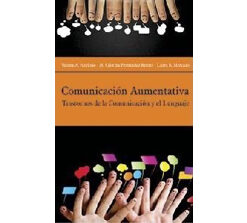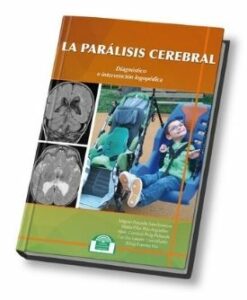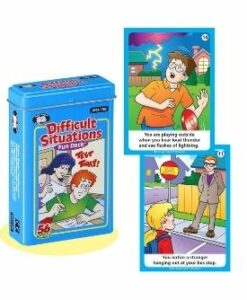
Aprender es modificar o adquirir nuevas habilidades, destrezas, conocimientos, conductas y valores mediante la experimentación, el estudio, la observación, el razonamiento o la instrucción. Múltiples y variados juegos disponibles hoy en día, desde los más clásicos hasta los más innovadores, pueden ser grandes herramientas para construir una variedad de aprendizajes: lectoescritura, matemáticas, razonamiento y resolución de problemas, etc. aportando motivación e interés a los jugadores. Más allá de la estimulación de las inteligencias múltiples, fomentaremos la autoestima, incentivaremos la cooperación y el trabajo en equipo y mejoraremos el comportamiento y la actitud, entre otros muchos aspectos.
 Auditory Memory Caterpillar
29,90 € (VAT not included)
Auditory Memory Caterpillar
29,90 € (VAT not included)
 Comunicación aumentativa. Trastornos de la comunicación y el lenguaje
21,50 € (VAT not included)
Comunicación aumentativa. Trastornos de la comunicación y el lenguaje
21,50 € (VAT not included)
 La parálisis cerebral. Diagnóstico e intervención logopédica
19,50 € (VAT not included)
La parálisis cerebral. Diagnóstico e intervención logopédica
19,50 € (VAT not included)
 Baby guitar teether
9,10 € (VAT not included)
Baby guitar teether
9,10 € (VAT not included)
 Pressure brushes - Webber neon
19,90 € (VAT not included)
Pressure brushes - Webber neon
19,90 € (VAT not included)
 Learning to manage difficult situations
18,50 € (VAT not included)
Learning to manage difficult situations
18,50 € (VAT not included)
 Anti-stress Fidget - Needoh Macaroons
7,00 € (VAT not included)
Anti-stress Fidget - Needoh Macaroons
7,00 € (VAT not included)
Price filter
No account yet?
Create an AccountThe LEXI-LOTO game is a complete game to work on language skills, both oral and written, focusing on the comprehensive and expressive aspects of language. This is a pedagogical material based on logic that will allow the student or patient to develop reasoning in order to reach a final conclusion.
This game, consisting of 8 sheets, 4 identified in green (beginner level) and 4 in gray (advanced level), can be worked on according to 2 levels of difficulty to stimulate language skills according to age and/or individual ability.
The main objective of this interesting game is to promote the evocation and lexical categorization, two aspects that are very important in speech therapy reeducation. To find the word in question, the therapist or teacher can offer us an auditory information that we must relate to a drawing or a written word or we can read a definition that will give us lexical and phonological clues (e.g. find an animal that,.... has 3 syllables/begins with a vowel/is singular) to arrive at the "hidden" word. Thus, auditory and visual discrimination, letter and syllable recognition, comprehension of more or less complex grammatical and semantic instructions, etc. will be basic skills that we must train in order to win.
Thus, with the Lexi-loto we can promote lexical comprehension of both affirmative and negative sentences through oral information or by reading the instructions. The vignettes with images allow an indirect access to writing and help the student to develop the mental representation of the word. The eight lotus pictures allow us to work on concepts such as: feminine, masculine, plural, singular, consonant, vowel, number of syllables, categorization, etc.
Game recommended for ages 6 and up.
The set contains:5 stackable wooden boxes, filled with 20 pieces of wooden fruits and vegetables, all sorted by bright colors to match your box and with hand-painted details. Each box contains 2 pieces of fruit and 2 vegetables with threading holes. An ideal resource for imaginative play or role-play, for learning about healthy eating, for improving coordination and motor skills, or can be used to develop sorting, shape recognition and matching skills.
Ideal for promoting and reinforcing the following learning areas:
• Design and expressive arts: imaginative play
• Personal development: collaborative play
• Mathematics: counting and sorting
• Understanding of the world: color
- Communication and language: speaking and listening
Total size of stacked boxes: 500 x 150 x 74 mm. Each box: 100 x 150 x 74 mm.
Watermelon size: 100 mm. Length of cords to be threaded: approx. 900 mm.
Suitable from 3 years old.
https://logopedicum.com/wp-content/uploads/2021/12/Caja-de-frutas-y-verduras-3-247x300.jpg 61.59 instock 3 – 6 yearsAGEAreas of DevelopmentFine motor skillsFine motor skillsGAME TYPEGAMES AND TOYSHearing and languageLANGUAGELanguageLanguage gamesLearning CornersLEARNINGSMotor skillsMotor skills gamesSemanticsSymbolic and imitation gameSymbolic gameWood 0 0.00 0 https://logopedicum.com/wp-content/uploads/2021/12/Caja-de-frutas-y-verduras-3-247x300.jpg 2173521573217382169021591 61.59 50.90 0.00 0.00 2021-12-02T08:01:03+01:00Language learning normally takes place through communicative interaction between a child and a speaking environment, based on cognitive and physiological skills that determine the pace of development.
This interaction, which is characterized by a reciprocal adaptation of messages and utterances, is sufficient and necessary for the normal development of language to take place to its full extent.
However, there are cases of speech and/or language delays or absences, in which intellectual, sensory, structural or affective deficiencies prevent the full use of these real communication situations which, on the other hand, given the little success they obtain, are often also less stimulated by the environment.
It is then necessary to program a specific intervention, the speech therapy intervention.
Although such intervention should try to catch up as much as possible or correct defects starting from operative situations of communicative interaction (functional strategies), it is often necessary to carry out prior or parallel work of stimulation and specific learning of isolated elements, either in the phonetic aspect, or in the semantic or syntactic aspect (formal strategies).
These specific stimulation or learning exercises, programmed outside communication situations, run the risk of lacking motivation for children and tiring them out because of their highly repetitive nature: this is why re-educators have always made use of a motivation parallel to the learning itself, by including it in a play situation.
The games presented here are only intended to provide speech therapists with training material, long used before in speech and language re-education, focused more directly on those aspects that generally require a more or less long phase of repetition to achieve their definitive acquisition or in which the graphic representation allows a better understanding of the mechanisms that we are trying to re-educate or build.
They are not at all a learning method; neither are they the way to start the presentation of the linguistic contents they use: this presentation must start, in all cases, from an insertion in the communicative chain of which the children themselves are an active part.
They constitute one more material, an aid for a process of stimulation and model setting, necessary in many cases, and each professional will have to interpret and adapt it to his or her own methodological and situational variables.
https://logopedicum.com/wp-content/uploads/2021/12/Nuevo-Loto-oficios-247x300.jpg 11.99 instock BooksHearing and languageLANGUAGESemantics 0 0.00 0 https://logopedicum.com/wp-content/uploads/2021/12/Nuevo-Loto-oficios-247x300.jpg 2169021738212612129721800 11.99 11.53 0.00 0.00 2021-12-16T10:04:07+01:00